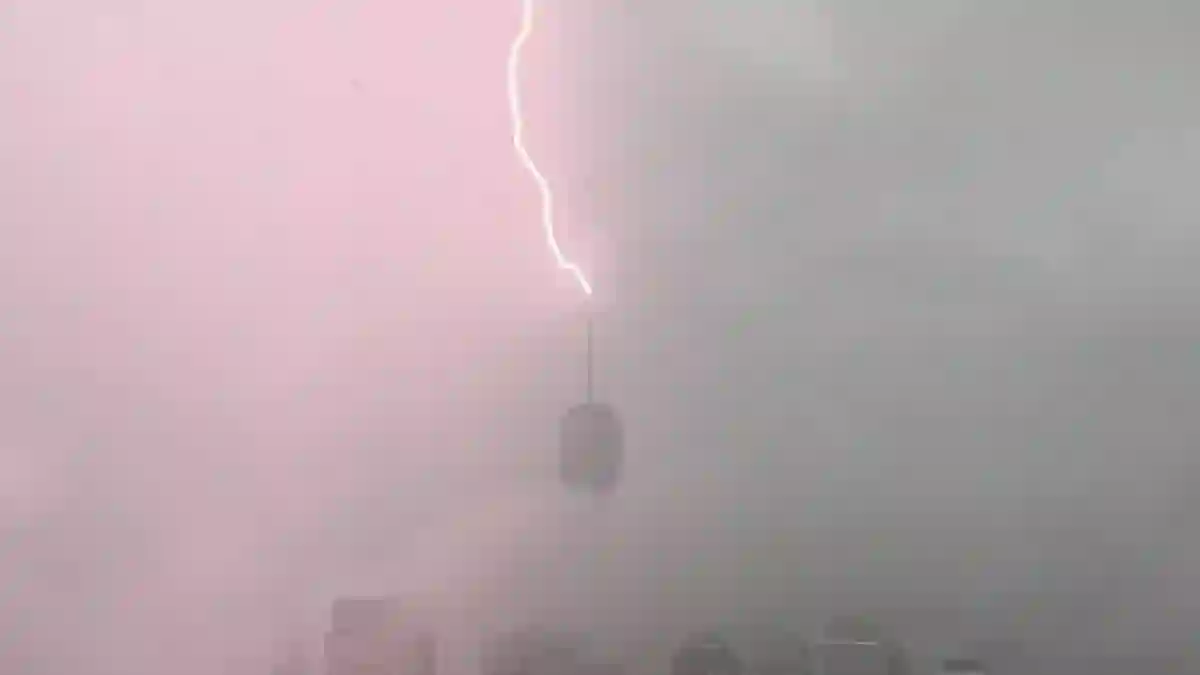What started out as just another summer thunderstorm quickly turned into a major weather crisis for millions across New York City and the Northeast on Monday night.
With heavy rain pummeling the region, the National Weather Service (NWS) issued urgent warnings about dangerous flash floods already underway.
Flash Flood Warnings Blanket NYC Boroughs and Beyond
By 5:42 p.m., law enforcement officials had already reported heavy thunderstorms causing severe rainfall.
In some spots, 1 to 2 inches of rain had fallen—and the forecast warned that even more was on the way.
The flash flood warnings now cover most of New York City, including Staten Island, Brooklyn, the Bronx, Manhattan, and Queens, as well as nearby Westchester County.
Officials expect the warnings to stay active until at least 9:45 p.m.
From Streets to Subways, Water Rushes In
Social media quickly lit up with dramatic footage showing how bad things had gotten.
One viral image captured lightning striking the World Trade Center, courtesy of photographer Dan Martland.
In another shocking scene, commuters on Manhattan’s 1 train were seen lifting their bags and feet as rainwater poured into the subway car just as it reached 23rd Street.
Gas stations appeared underwater. Cars sat half-submerged.
And across the state border in New Jersey’s Union County, the NWS didn’t hold back, warning that “life-threatening flooding” was possible.
Over 50 Million Under Flood Threat Across the Northeast
This isn’t just a local issue. Throughout the Northeast, more than 50 million people are now under some level of flood watch or warning.
The NWS urged anyone in affected areas not to drive through water-covered roads.
“Turn around, don’t drown,” they said—a clear reminder that most flood-related deaths happen in vehicles.
Here’s Why Flash Floods Are So Dangerous
The NWS explained that flash floods can happen extremely fast—sometimes in minutes, especially after intense rainfall.
Even areas not currently experiencing rain could be hit if the floodwater travels downhill or through storm drains.
Urban locations, roads, and low-lying areas are at especially high risk.
Warnings were issued for small creeks, streams, and underpasses that could quickly become overwhelmed.
What You Should Do If You’re in a Flood Zone
If you’re in an area prone to flooding, authorities say it’s best to move to higher ground right away.
And if local officials give evacuation orders, don’t wait—follow them.
If there’s time, turn off your utilities and unplug appliances to reduce the risk of electric shock.
Basements, submerged areas, and anything involving exposed electrical wires or outlets should be completely avoided.
If you hear popping or buzzing sounds near water, that could indicate live electricity—evacuate immediately.
Even Just Six Inches of Water Can Be Dangerous
A big misconception is that shallow water is safe to walk through.
But experts warn that just six inches of fast-moving water can knock a person off their feet.
And for cars, a foot of water is often enough to float or stall a vehicle.
The safest thing to do? Stay out of floodwaters entirely—no matter how deep or shallow it looks.
Echoes of a Recent Tragedy in Texas
This emergency comes on the heels of another devastating flash flood event in Texas just last week.
That disaster claimed the lives of at least 132 people, with more than 100 others still unaccounted for.
It’s a tragic reminder of just how serious these sudden floods can be.
